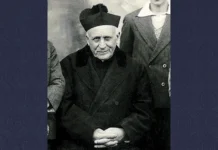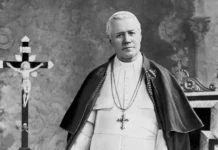I n the In the present-day world, Mary Most Holy presents herself to us as a Queen seated on her throne, placed in a large hall filled with enemies who wish to dethrone Her. They have already pulled down her canopy; from her venerable brow they have snatched the crown of glory which is hers by right, and have wrenched the sceptre from her hands.
The Queen, however, who can do nothing but weep, also has in her presence a handful of faithful subjects, to whom She continually turns a supplicating look, pervaded with pain and affliction.
In face of this moving appeal, what should be the thought of each of the faithful vassals present in that royal chamber?
“My Sovereign is being torn from her throne. To me She turns her eyes, beseeching my help so as to prevent the consummation of this dethronement. Will I be one to whom She looks in vain? No! This gaze must produce in me the same effect that the gaze of Jesus worked in St. Peter. In other words, that look which the Queen fixes upon me in a climax of anguish must be met with a climax of generosity on my part.”
This climax of generosity, in turn, will be met with a supreme reward: in Heaven, the Queen’s gaze – no longer of supplication, but overflowing with maternal love, benignity and affection – will be forevermore rest upon those who came to her aid in this world.
I believe that the epitaph of each of those who heeded the Queen’s call should read: “Here lies someone to whom Our Lady looked at the hour of complete abandonment – at the moment of affliction, when there was almost no one at her side – and who responded YES to that appeal.” ◊
Plinio Corrêa de Oliveira
Above, statue of the Immaculate Heart of Mary that wept in Costa Rica on 26/4/2018







